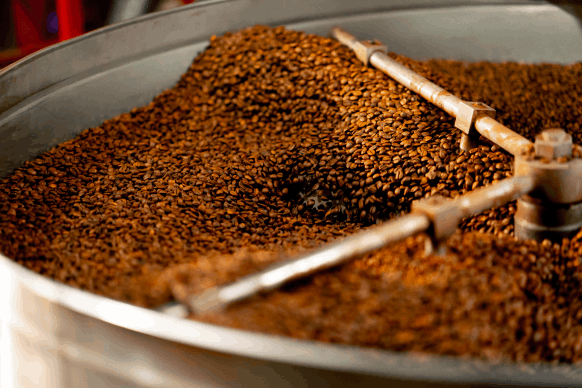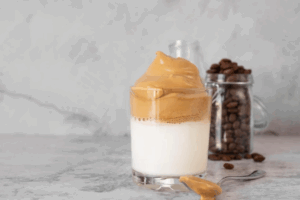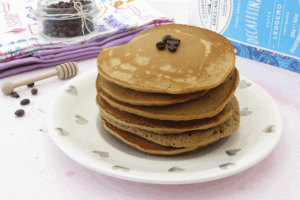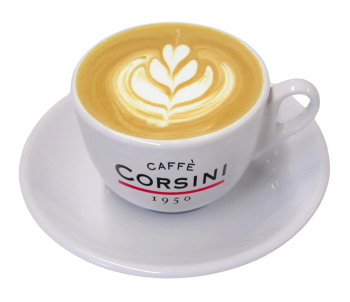
Miegs un kafija. Kā atrast līdzsvaru starp enerģiju un atpūtu
Kafija daudziem ir kā rīta glābējs , tā ir aromātiska, uzmundrinoša un iedvesmojoša. Tā palīdz sākt dienu ar skaidru prātu, paceļ garastāvokli un veicina produktivitāti.
Coffee beans are greenish and hard in their natural state. But the moment these beans are exposed to heat, the real magic begins - the roasting process. It transforms the raw material into a flavourful, intense and sometimes surprising drink. The level of roast has a significant impact on what you taste in each sip. And here begins a story where the protagonists are not milk or sugar, but the roast.

Simply put, the roast level indicates how long and at what temperature the coffee beans have been roasted. The process starts at around 180-250°C and, depending on how long the beans are kept in the roaster, they change their colour, aroma and chemical composition. This results in the three classic roasting levels - light, medium and dark.
Light roasted beans are light brown, without an oily sheen. These coffees retain more of the characteristics of the bean's origin - they are more nuanced, often with fruity, floral or citrus character.
These coffees are more acidic and have slightly more caffeine than darker roasts. This style is particularly appealing to those who appreciate regional differences, such as in Ethiopian or Colombian coffees. The light roast allows the bean to speak for itself.
Medium roasted beans have a warmer, browner tone and sometimes a light coating of oil. This is where the flavour profile becomes more interesting: fruity notes remain, but caramel, chocolate or nutty elements also appear. The acidity becomes milder and the coffee more balanced.
It is this type of roast that is the most common in the world, combining both the origin of the bean and the contribution of the roast. It is a great base for espresso, but filter coffee lovers also appreciate its fullness and harmony.
Dark roasted beans are almost black, with an oily surface and a very intense aroma. The acidity almost disappears, replaced by smoke, bitter chocolate, roasted nuts and even hints of coal.
These coffees are often chosen by those who want a strong, full-bodied and classic espresso. But take note - the darker the roast, the more the origin of the bean is sacrificed for intensity.
Contrary to popular myth, darker coffee does not mean more caffeine. In fact, the longer the beans are roasted, the more caffeine is broken down. So if your goal is an energy boost, a lighter roast will be more effective. A dark roast, on the other hand, can help you prepare emotionally for a day that's already having a bad start.
In the heart of Tuscany, Italy, Caffè Corsini has been known for its artistic approach to roasting since 1950. With professionals such as Michele Anedotti - Italy's best roaster - and taster Francesco Sanapo, the company is able to create a nuanced and high-quality product where every level of roasting is carefully considered. Not just because it sounds good in the marketing material, but because they simply know what they are doing.
Coffee roast level is not just a visual indicator or a design detail. It determines everything from the first aroma you smell to the aftertaste notes that linger long after the last sip. It is a story of temperature, time and human craftsmanship. And, of course, about your taste. Whether you choose a nuanced light, a balanced medium or a dominant dark is your decision.

Kafija daudziem ir kā rīta glābējs , tā ir aromātiska, uzmundrinoša un iedvesmojoša. Tā palīdz sākt dienu ar skaidru prātu, paceļ garastāvokli un veicina produktivitāti.

Kafija ir ikdienas rituāls, kas palīdz pamosties, sakārtot domas un sagatavoties dienai. Taču ne vienmēr kafijas tase izdodas perfekta. Dažkārt tā garšo pārāk rūgti, citreiz

Jamaikas Zilo kalnu kafija, pazīstama arī kā “Jamaica Blue Mountain” vai “JBM”, jau gadsimtiem tiek vērtēta kā viena no izcilākajām kafijas šķirnēm pasaulē. To audzē

Kafija ir viens no populārākajiem dzērieniem pasaulē, ar to dienu sāk miljoniem cilvēku, tā pavada mūs darba laikā un draugu tikšanās reizēs. Taču bieži rodas

Coffee is a drink that unites people around the world. In the morning, it is a dose of energy, peaceful conversations over a cup with friends, or strength at work that helps

Who could resist coffee or chocolate? Each one is a treat in itself, but together they create a special experience. Coffee with

Coffee cremino is a recipe prepared throughout Italy and is also known by other names, such as coffee cream or coffee mousse. This dessert can be served

Want to start your day with something special? This coffee pancake recipe will not only give you a warm and cozy taste, but also a little boost of energy. It
Pieraksties akcijām un jaunumiem
saņem 10% atlaidi pirmajam pirkumam
